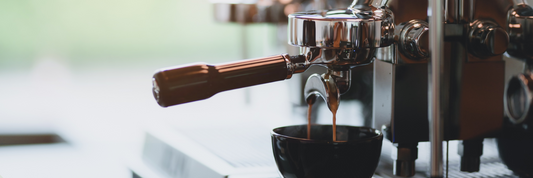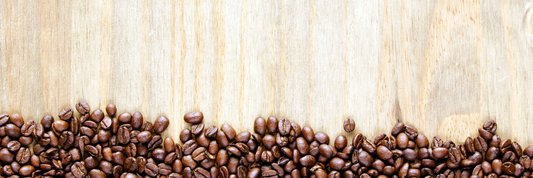Wine bottles are more than just containers—they are an essential part of the wine experience, influencing everything from storage to presentation. This guide will explore the fascinating process of wine bottle manufacturing, different types of bottles, and tips on choosing the right one for your wine collection or occasion.
- A Complete Guide to Wine Bottle Shapes and Their Significance
-
Champagne Bottle Sizes: The Ultimate Guide for Every Occasion
What is a Wine Bottle? The Foundation

Root Attributes: Defining the Basics
A wine bottle, at its core, is a container primarily made of glass. This fundamental material has been favored for centuries due to its inert nature, preventing unwanted chemical reactions with the wine, and its transparency, allowing consumers to see the liquid inside.
These glass bottles for wine are specifically designed to hold and preserve wine, protecting it from external elements like oxygen and light that can degrade its quality. Typically, a wine bottle is sealed with a closure, most commonly a cork or a screw cap, although other alternatives exist. These closures are crucial for maintaining the wine's freshness and preventing leaks. Furthermore, wine bottles are available in various standard sizes, with the most common being the 750ml bottle.
This size has become the industry standard for most table wines, making it easy for consumers to understand quantities and for producers to manage inventory and wine packaging. You might have seen smaller bottles, like the 375ml "half bottle," or larger formats like the 1.5L "magnum," each serving different purposes and occasions. Just like choosing the right types of wine closures is important for preservation, the basic attributes of a wine bottle lay the groundwork for its functionality and role in the world of wine.

The Fascinating History of Wine Bottles
Early Wine Storage Before Glass
Long before the elegant glass bottles for wine we know today, people stored wine in various rudimentary containers. Imagine early civilizations using clay amphorae, often sealed with resin or wax, to transport and store their precious fermented grape juice. These earthenware vessels, while functional, were heavy, fragile, and not always airtight, leading to variable wine quality.
Animal skins, treated and sewn into bags, were another early form of wine storage, offering portability but lacking the durability and preservation capabilities of later options. Even wooden barrels, which would eventually become crucial for aging certain wines, were initially used more for transport than long-term storage due to their potential to impart flavors and allow evaporation.
The Evolution of Glassmaking and its Impact
The advent of glassmaking revolutionized how wine was stored and perceived. Early glass production, however, was a laborious and expensive process, meaning that glass bottles for wine were initially a luxury item. Over time, as glassmaking techniques improved, particularly with the invention of glassblowing, the production of bottles became more efficient and affordable.
This evolution had a profound impact on the wine industry. Glass bottles offered several advantages over previous methods: they were non-porous, providing a better seal and preventing oxidation; they were transparent, allowing consumers to see the wine's clarity and color; and they could be more easily standardized in shape and size.
This period saw the gradual adoption of glass bottles for wine as the preferred method for preserving and transporting quality wines, laying the foundation for the diverse range of wine bottle sizes we see today.
Standardizing the Wine Bottle: The 750ml Norm
The standardization of this size is a result of a confluence of historical factors. One popular theory links it to the traditional British measurement of a gallon (approximately 4.5 liters or six bottles). It's said that a standard case of wine held six gallons, making each bottle roughly 750ml.
Another explanation points to the capacity of glassblowers. It was believed that 750ml was the average lung capacity for a glassblower to produce a bottle of a reasonable size in one breath. Regardless of the exact origin, the 750ml size gained widespread acceptance and became the industry standard.
Decoding the Anatomy of a Wine Bottle
The Body: Shape and Size Variations
The body of a glass bottle for wine is perhaps its most visually distinctive feature, with different shapes often signaling the type of wine within. Think of the classic Bordeaux bottle, with its straight sides and high, pronounced shoulders, designed to catch sediment in older red wines like Cabernet Sauvignon and Merlot.
In contrast, the Burgundy bottle features more gently sloping shoulders and a wider base, traditionally used for Pinot Noir and Chardonnay. You might also encounter the Rhône bottle, which shares similarities with the Burgundy shape but often includes embossed details or a heavier feel, reflecting the robust character of the wines from that region. The elegant Alsace/Mosel bottle stands tall and slender, typically used for Riesling and Gewürztraminer, emphasizing their delicate aromas.
Then there's the sturdy Champagne bottle, built with thicker glass and a distinctive punt at the bottom to withstand the pressure of sparkling wine. Beyond these iconic shapes, you'll find other regional and unique designs, sometimes reflecting a winery's branding or a specific grape varietal. While the 750ml remains the standard, remember that wine bottle sizes can vary, influencing the aging process and serving portions.
The Neck and Finish: Preparing for the Closure
The neck of a wine bottle plays a crucial role in controlling the pour and preparing the bottle for its closure. The shape and length of the neck can subtly influence the wine's interaction with air. At the top of the neck is the "finish," the precisely shaped area that accommodates the types of wine closures. Different finishes are designed for specific closures.
For example, a standard cork finish has a slightly rounded top, while screw-cap finishes have threads for a tight seal. The finish ensures a secure fit, preventing oxygen from entering and compromising the wine's quality. When you buy wine bottles online, you'll notice that the description often specifies the finish type, especially if you're looking for where to buy empty 750ml green wine bottles with corks.
The Punt: Purpose and Myths
That indentation at the bottom of some wine bottles, known as the punt, has sparked much debate about its purpose. One common belief is that it helps to collect sediment in older red wines, preventing it from being poured into the glass. Another theory suggests it adds structural integrity to the bottle, making it more resistant to the pressure in sparkling wines like Champagne.
It's also been argued that the punt simply makes the bottle easier to grip and pour. While there might be some truth to these explanations, particularly for sparkling wines, the size and presence of a punt don't necessarily correlate with wine quality. Some producers might use a deeper punt for aesthetic reasons or to give the bottle a more substantial feel.
The Label: More Than Just Information
The label on a wine bottle is far more than just a sticker. Legally, it must include details like the producer's name, the region of origin, the vintage (if applicable), the alcohol content, and the volume of wine in the bottle.
However, many wineries also use the label to tell a story about their brand, their history, and the characteristics of the wine inside. The design, the paper stock, and the overall aesthetic of the label contribute to the wine's perceived value and can influence a consumer's decision to buy wine bottles online or in a store.
Think of it as the wine's first impression – it provides clues about what to expect and helps you differentiate between various options, from a best price wine bottles selection to a more premium offering. Sometimes, labels even become collectible pieces of art in themselves!

Wine Bottle Sizes: From Piccolo to Nebuchadnezzar
Standard Sizes and Their Uses
Wine bottles come in a fascinating array of sizes, each often suited for specific purposes or occasions. Here's a look at some standard wine bottle sizes you might encounter:
- Piccolo (187.5ml): Often used for single servings, particularly in airlines or as a sample size.
- Half Bottle (375ml): Ideal for individuals who want just a couple of glasses or for sampling a new wine without committing to a full bottle.
- Standard (750ml): The most common size for table wines, typically containing about five glasses.
- Magnum (1.5L): Holds the equivalent of two standard bottles. Magnums are often chosen for celebrations or when aging wine, as the larger volume tends to slow down the maturation process.
- Jeroboam (3L): Equivalent to four standard bottles. This size is often seen at large gatherings and can add a sense of occasion. Note that for sparkling wines, a Jeroboam may refer to a 3-liter bottle (four standard bottles), while for still wines, it can sometimes refer to a 4.5-liter bottle (six standard bottles).
- Rehoboam (4.5L): Holds six standard bottles and is typically used for sparkling wines.
- Methuselah (6L): Equivalent to eight standard bottles, often used for celebratory events.
- Salmanazar (9L): Holds twelve standard bottles, a grand size for very large parties.
- Balthazar (12L): Equivalent to sixteen standard bottles, a truly impressive format.
- Nebuchadnezzar (15L): The largest of the standard bottle sizes, holding twenty standard bottles. These are usually reserved for the most significant celebrations.
Reasons for Different Bottle Sizes
The variety in wine bottle sizes isn't arbitrary; several factors contribute to this range. One key reason is the aging potential of the wine. Larger formats, like magnums and jeroboams, generally allow wine to age more slowly and gracefully due to the lower ratio of oxygen to wine in the bottle. This can be particularly beneficial for wines intended for long-term cellaring.
Smaller bottles like piccolos and half bottles are convenient for individual consumption or when you want to sample different wines. Standard 750ml bottles are versatile for everyday enjoyment or small gatherings. Larger formats, as mentioned earlier, are ideal for celebrations and sharing with a larger group, adding a sense of festivity and abundance.
Sometimes, wineries will release limited editions or special cuvées in unique or larger bottle formats to make them stand out or appeal to collectors. The visual impact of a large-format bottle can be significant, making it a popular choice for gifts or special events.

The Environmental Impact and Sustainability of Wine Bottles
The Carbon Footprint of Glass Production
As an expert in eco-friendly packaging, it's crucial to address the environmental impact of glass bottles for wine. While glass is a recyclable material, its production is energy-intensive, leading to a significant carbon footprint. The process of heating raw materials like silica sand, soda ash, and limestone to high temperatures requires substantial energy, often derived from fossil fuels. This results in considerable greenhouse gas emissions contributing to climate change.
Recycling Initiatives and Challenges
Recycling reduces the need for virgin raw materials and lowers the energy required for production, thus decreasing carbon emissions. Many regions have established recycling programs that accept glass, and consumer participation is crucial for their success. However, challenges remain in the glass recycling process. Contamination from other materials can affect the quality of recycled glass. Additionally, the weight of glass makes its transportation to recycling facilities less efficient compared to lighter materials.
Innovations in Lightweight and Alternative Wine Bottles
Recognizing the environmental concerns associated with traditional glass bottles for wine, the industry is witnessing exciting innovations in lightweighting and alternative materials. Lightweight glass bottles require less energy to produce and transport, significantly reducing their carbon footprint. These bottles maintain the quality and protective properties needed for wine preservation while being more eco-friendly.
These include bottles made from recycled PET plastic, which is lighter than glass and has a lower carbon footprint, as well as more novel options like paper-based bottles with a food-grade liner. While these alternatives are still gaining traction, they represent a promising direction for creating more sustainable options for wineries and consumers who are looking for eco-friendly wine bottle suppliers near me or want to buy wine bottles online with a lower environmental impact.

Unique Attributes: What Makes Some Wine Bottles Stand Out
Unique Attributes: Specific Historical Significance
Beyond the standard glass bottles for wine, certain bottles possess a unique historical significance that elevates them beyond mere wine packaging. Imagine a bottle originating from a renowned or historic winery, perhaps one that has been producing wine for centuries. Such bottles can become highly sought after by collectors, representing a tangible piece of winemaking history.
Similarly, bottles containing very old or rare vintages hold a special allure. These wines, often aged for decades, offer a glimpse into the past and are incredibly scarce. Owning such a bottle is like holding a time capsule, a testament to the enduring quality of exceptional wines. These bottles are not just about the liquid inside; they are artifacts that tell a story of tradition, craftsmanship, and the passage of time.
Unique Attributes: Distinctive Design or Branding
In a competitive market, standing out is crucial, and some wineries achieve this through artistic or unusually shaped bottles. Think of the iconic curves of certain Champagne bottles or the uniquely embossed designs that some producers incorporate into their wine packaging.
These distinctive shapes and designs can become synonymous with a particular brand, making them instantly recognizable. Furthermore, bottles with special labels or closures can also set them apart. This could involve limited-edition labels created by renowned artists, or unique closure mechanisms that enhance the presentation and perceived value of the wine.
For example, some premium wines might use hand-dipped wax seals or intricately designed corks. These elements contribute to a memorable unboxing experience and can make a bottle a cherished keepsake long after the wine has been enjoyed. If you're looking for a personalized wine bottles option for a special gift, unique design elements play a significant role in creating a lasting impression.
Unique Attributes: Evidence of Authenticity and Provenance
For serious wine collectors, the authenticity and provenance of a bottle are paramount. Certain features can provide this assurance. Numbered bottles are a common way for producers to indicate a limited release and track individual bottles. These numbers can often be registered with the winery, providing a record of ownership and authenticity.
Bottles with specific markings, such as vintage port bottles with the year sandblasted onto the glass, also serve as indicators of their origin and age. Additionally, the condition of the label, capsule, and cork can offer clues about how the bottle has been stored and its overall history. Reputable sellers who buy wine bottles online or through traditional channels will often provide detailed information about a bottle's provenance, including its storage history and any available documentation.
This evidence of authenticity adds significant value to collectible wines, assuring buyers of their unique history and quality.

Conclusion
As an expert in eco-friendly packaging, I see a future where the wine bottle continues to evolve, driven by a growing focus on sustainability and technological advancements. We are already witnessing exciting innovations in lightweight and alternative wine bottles, aiming to reduce the carbon footprint associated with traditional glass production.
Expect to see more widespread adoption of these eco-friendly wine bottle suppliers near me and globally, as the industry strives for greener practices. Further advancements in glass technology could lead to even lighter yet stronger bottles. We might also see more sophisticated closures that offer enhanced preservation while being easily recyclable.
The quest for the best type of wine bottle for aging red wine might even lead to new materials or designs that surpass current standards. The future of the wine bottle is likely to be shaped by a blend of tradition and innovation, always with the goal of preserving the quality of the wine while minimizing its impact on our planet.
FAQ
- What is the standard size of a wine bottle? The standard size is 750ml, which holds approximately 25.4 fluid ounces or about five glasses of wine.
- Why are some wine bottles green? Green glass helps protect the wine from harmful UV rays that can cause it to age prematurely or develop off-flavors. Amber glass offers even more protection, while clear glass is often used for white or rosé wines meant for early consumption.
- What is the purpose of the indentation (punt) at the bottom of some wine bottles? The punt's purpose is debated, but it's thought to add structural integrity to the bottle, especially for sparkling wines, and can also help collect sediment in older red wines. It might also make the bottle easier to grip and pour.
- Are screw-cap wine bottles lower quality than corked ones? Not necessarily. Screw caps provide an excellent seal and prevent cork taint, a common issue with natural corks. They are often preferred for younger, fruit-forward wines, while corks are still favored for wines intended for long-term aging due to their ability to allow a small amount of oxygen exchange.




